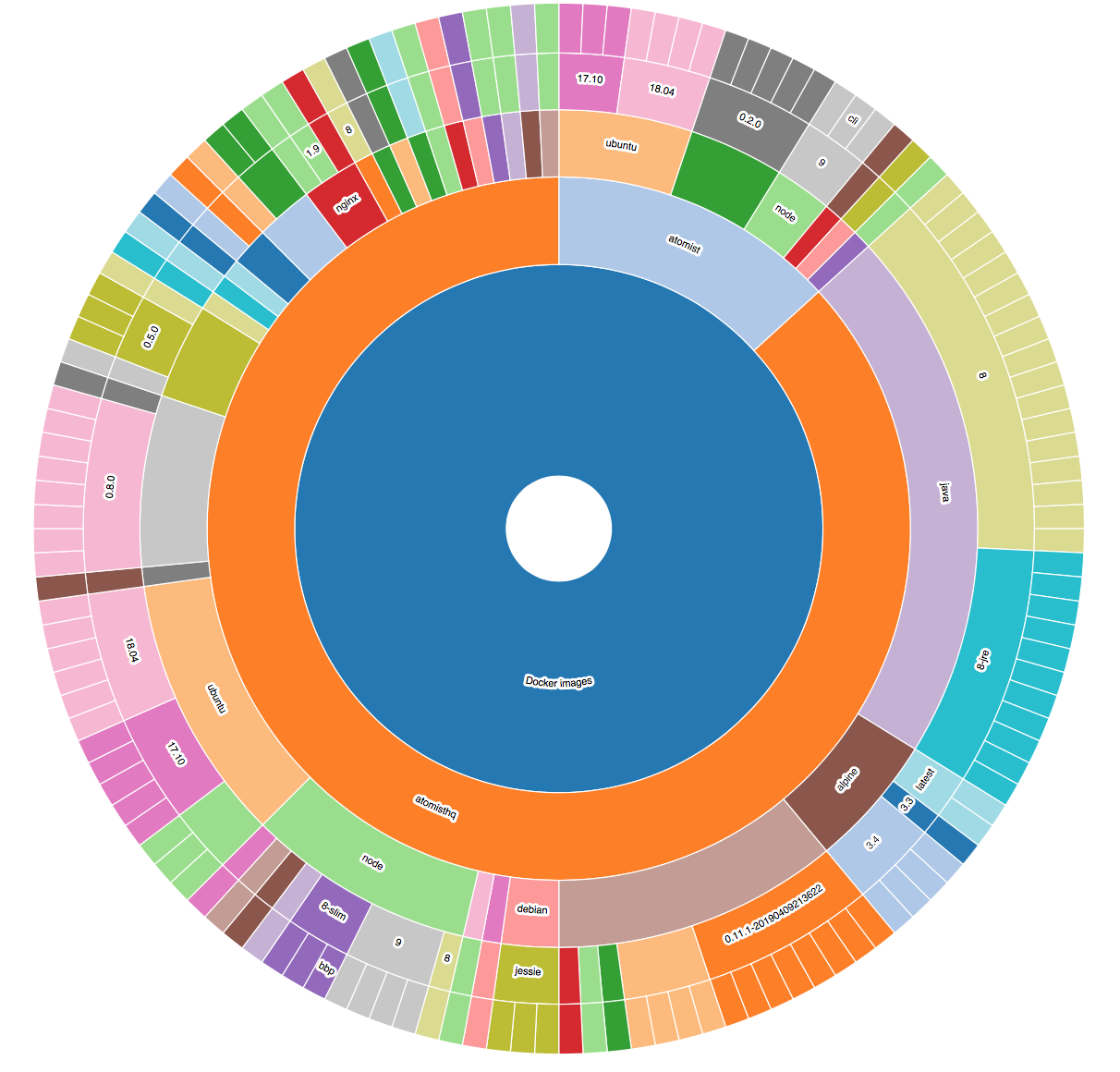@atomist/sdm-pack-aspect
A tool for visualizing technology usage and drift across an organization.
The cloud native era has led to an explosion of repositories, which we lack tools to understand and manage at scale. See Rod Johnson's blog This Will Surprise You for further discussion.
An Atomist aspect captures a concern in your project, in anything available from git: repository content (code and configuration) and git data such as branch counts and committer activity. Aspects support the following use cases:
- Visualization (all aspects): See usage and drift across your organization.
- Convergence (some aspects): Help drive code changes to achieve consistency on an "ideal" state of an aspect, such as a particularly version of a library.
- Reaction to change (some aspects): React to changes in aspect usage within a project: for example, to a library upgrade, removing the Spring Boot Security starter or exposing an additional port in a Docker container.
This project focuses on the visualization use case. Visualizations are exposed via d3 sunburst charts and via a REST API returning JSON documents.
There is out of the box support for investigating the following aspects of your project:
- TypeScript version
- Spring Boot version and starters (with Maven)
- Docker base images, Dockerfile path and exposed ports
- Java build tool (Maven, Gradle)
- Library versions (npm, Maven, Python)
- Inclusion of a code of conduct
- Common CI tools
- git activity and branch count
Analysis is extensible using the Atomist Project API. Implementing and registering additional aspects will result in additional visualization links after re-analysis and restarting the application.
An example visualization, showing Docker images used across two GitHub organizations:
Running
To visualize your org:
- Clone and build this project
- Set up the required PostgreSQL database
- Run the
org-visualizer - Run analysis on your repositories
- Hit the web interface at http://localhost:2866
- If you have more ideas, add code to study more aspects of your projects
Building
Please use Node 10+.
First, install with npm ci.
Next, build with npm run build
Database setup
Creating the Database
Data about each repository is stored locally in a PostgreSQL database.
Start Postgres, connect to it, and run the create.ddl script to set up the database.
If you want to wipe out your data and start over, this will also accomplish that.
> psql
psql> \i ddl/create.ddl
Connecting to the Database
For anything other than the default Postgres connection parameters and db org_viz:
Configure the Postgres database details in client.config.json in your ~/.atomist:
{
"sdm": {
"postgres": {
"user": "<postgres user>",
"password": "<postgres password",
"host": "<postgres host>",
"port": "<postgres port>",
"database": "org_viz"
}
}
}If ~/.atomist/client.config.json does not exist, create it with the above content.
Other Dependencies
You will need the following installed on your machine for the out of the box aspects to work:
- The
gitbinary - Java
- A JDK (not a JRE)
- Maven -
mvnmust be on the path.
- Node
- npm
All artifacts referenced in Maven or Node projects must be accessible when the analysis runs.
You can check this by manually running mvn or npm i on the relevant projects.
Analyze your repositories
You can start quickly by loading data from four open source organizations by running the script
load-demo-data.sh.
The analyze command is part of this org-visualizer project.
It works as at Atomist command, which runs through the atomist CLI.
- install the CLI:
npm i -g @atomist/cli - start the org_visualizer (in the org_visualizer project):
atomist start --local
GitHub
To analyze a GitHub organization, run the following command:
atomist analyze github repositories
Enter the GitHub owner name (e.g., 'atomist') at the prompt.
When prompted for a query, hit enter to skip.
To access private repositories, ensure that your GitHub token is available to
Node processes via a GITHUB_TOKEN environment variable.
Local directories
To analyze local directories, wherever they were cloned from, specify the full path of the parent directory of the repositories, as follows:
atomist analyze local --l /Users/rodjohnson/atomist/projects/spring-team/
General
Run
atomist analyze [local|github]with--update trueflag to force updates to existing analyses. Do this if you have updated your analyzer code. (See Extending below.)
Use the --cloneUnder [dir] option to supply a stable directory under which all cloning should be performed.
Otherwise, temporary files will be used.
If using a stable directory, make sure the directory exists and is writable by the
org-visualizerprocess. And keep an eye on disk usage, as these directories are not transient and will not be deleted automatically.
Run the web app
When the server is running with atomist start --local, you can see the visualizations.
Go to http://localhost:2866.
Architecture
There are four architectural layers:
-
Analysis. This is enabled by implementing Aspects. Aspects know how to take fingerprints (extractions of small relevant bits) of the code, compare them, and even update them. Analysis is triggered by
atomist analyzeor, in regular use, by an Atomist SDM. - Query functionality.
- API layer. Once your server is running, see the Swagger API documentation at http://localhost:2866/api-docs
- Simple UI using static React and d3 exposing sunburst charts based on the API.
Extending
This project includes some well known aspects but it is intended for you to add your own.
Do this by updating the aspects function defined in the aspects.ts file. Simply add aspects to this array:
export function aspects(): Aspect[] {
return [
DockerFrom,
TypeScriptVersion,
//... add your aspects hereAfter updating your code you will need to rerun existing analyses. Run
atomist analyze [local|github] --update trueagain to force updates on existing data.
See the developer guide for more information.
Next Steps
The Atomist service keeps analyses up to date automatically across all your repositories. It can also help to achieve consistency and convergence in eligible aspects by updating projects, and enabling workflows on change.
See https://atomist.com/developer.html for further information.
Created by Atomist. Need Help? Join our Slack workspace.

